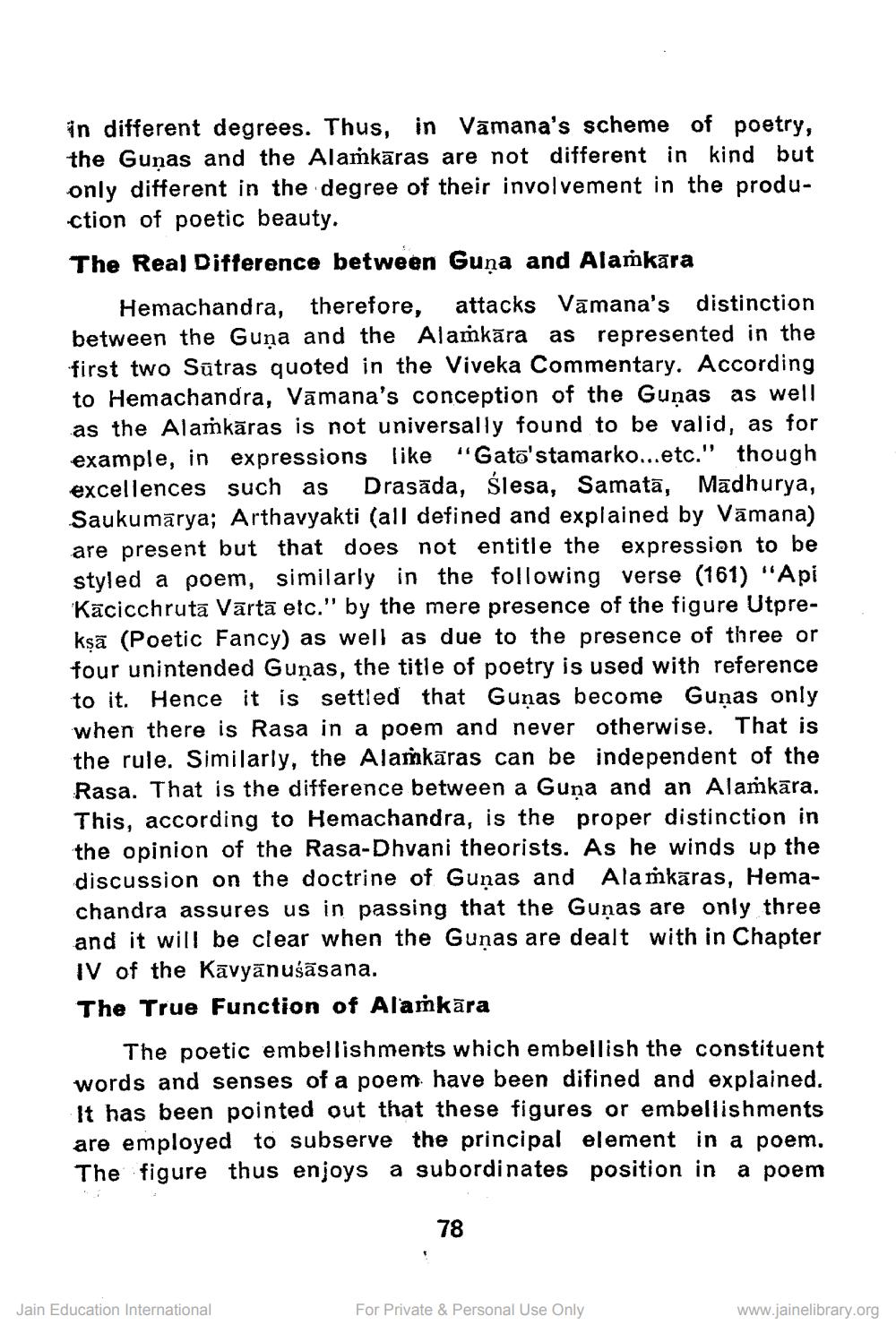________________
in different degrees. Thus, in Vamana's scheme of poetry, the Guņas and the Alamkāras are not different in kind but only different in the degree of their involvement in the production of poetic beauty. The Real Difference between Guņa and Alamkara
Hemachandra, therefore, attacks Vāmana's distinction between the Guņa and the Alamkāra as represented in the first two Sūtras quoted in the Viveka Commentary. According to Hemachandra, Vāmana's conception of the Guņas as well as the Alamkāras is not universally found to be valid, as for example, in expressions like "Gato'stamarko...etc." though excellences such as Drasāda, Ślesa, Samatā, Madhurya, Saukumarya; Arthavyakti (all defined and explained by Vāmana) are present but that does not entitle the expression to be styled a poem, similarly in the following verse (161) "Api Kācicchruta Vārtā etc." by the mere presence of the figure Utpreksā (Poetic Fancy) as well as due to the presence of three or four unintended Guņas, the title of poetry is used with reference to it. Hence it is settled that Gunas become Guņas only when there is Rasa in a poem and never otherwise. That is the rule. Similarly, the Alamkāras can be independent of the Rasa. That is the difference between a Guna and an Alamkāra. This, according to Hemachandra, is the proper distinction in the opinion of the Rasa-Dhvani theorists. As he winds up the discussion on the doctrine of Guņas and Alamkāras, Hemachandra assures us in passing that the Guņas are only three and it will be clear when the Guņas are dealt with in Chapter IV of the Kavyānusāsana. The True Function of Alamkāra
The poetic embellishments which embellish the constituent words and senses of a poem have been difined and explained. It has been pointed out that these figures or embellishments are employed to subserve the principal element in a poem. The figure thus enjoys a subordinates position in a poem
78
Jain Education International
For Private & Personal Use Only
www.jainelibrary.org




